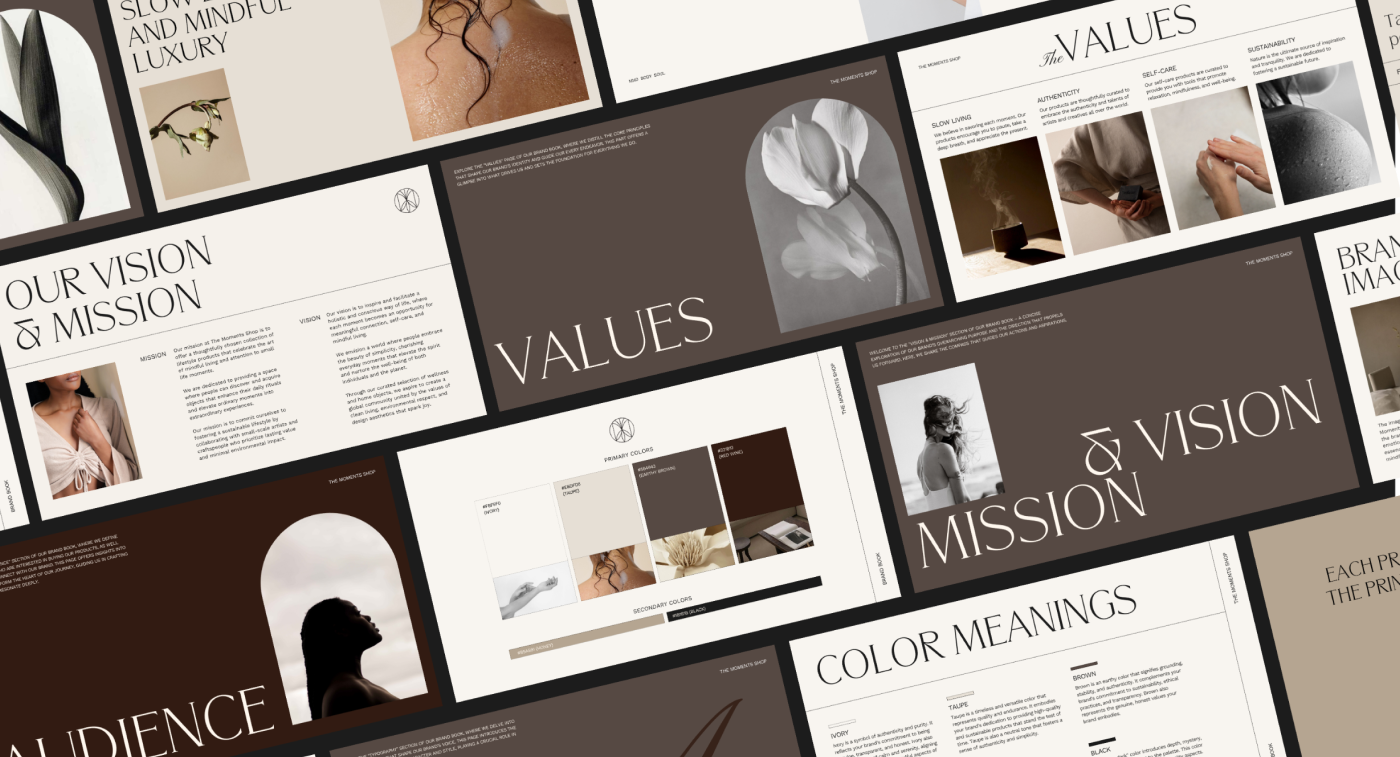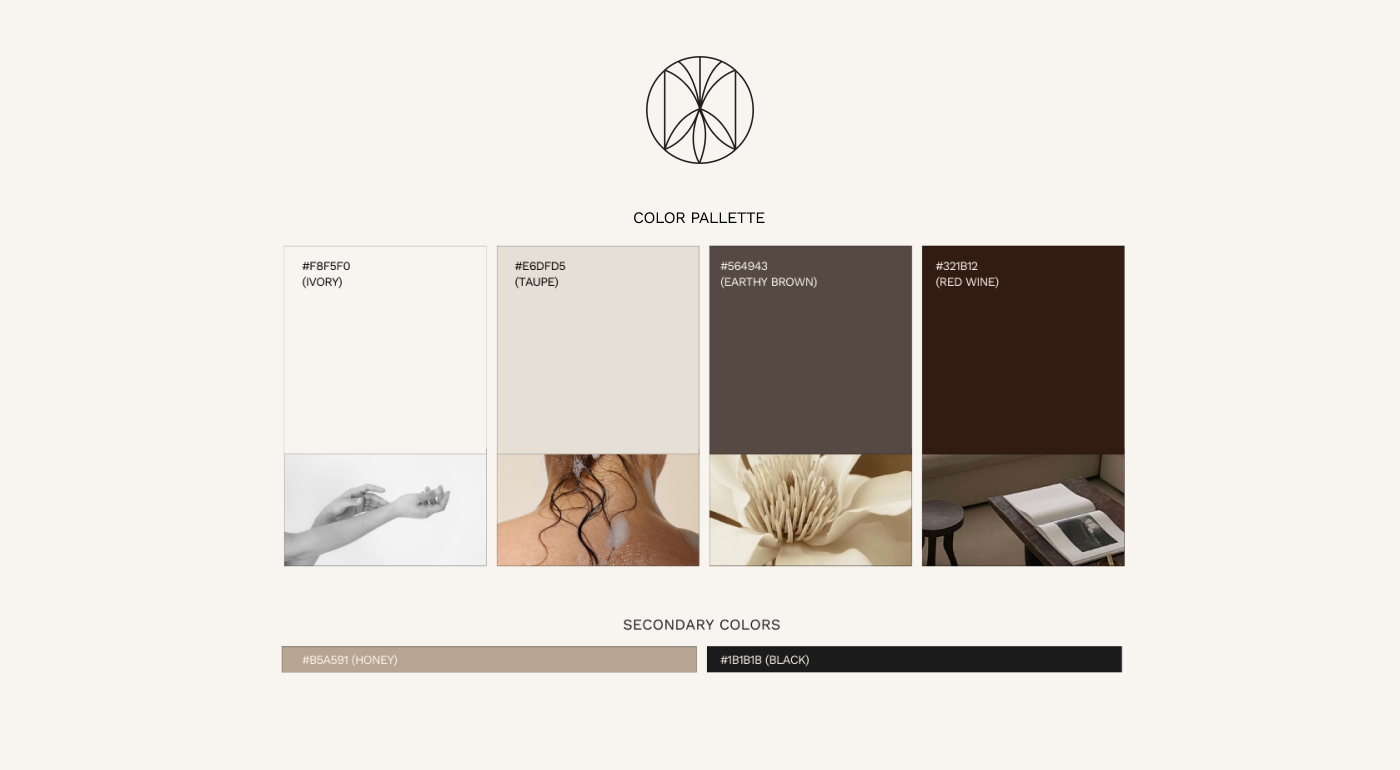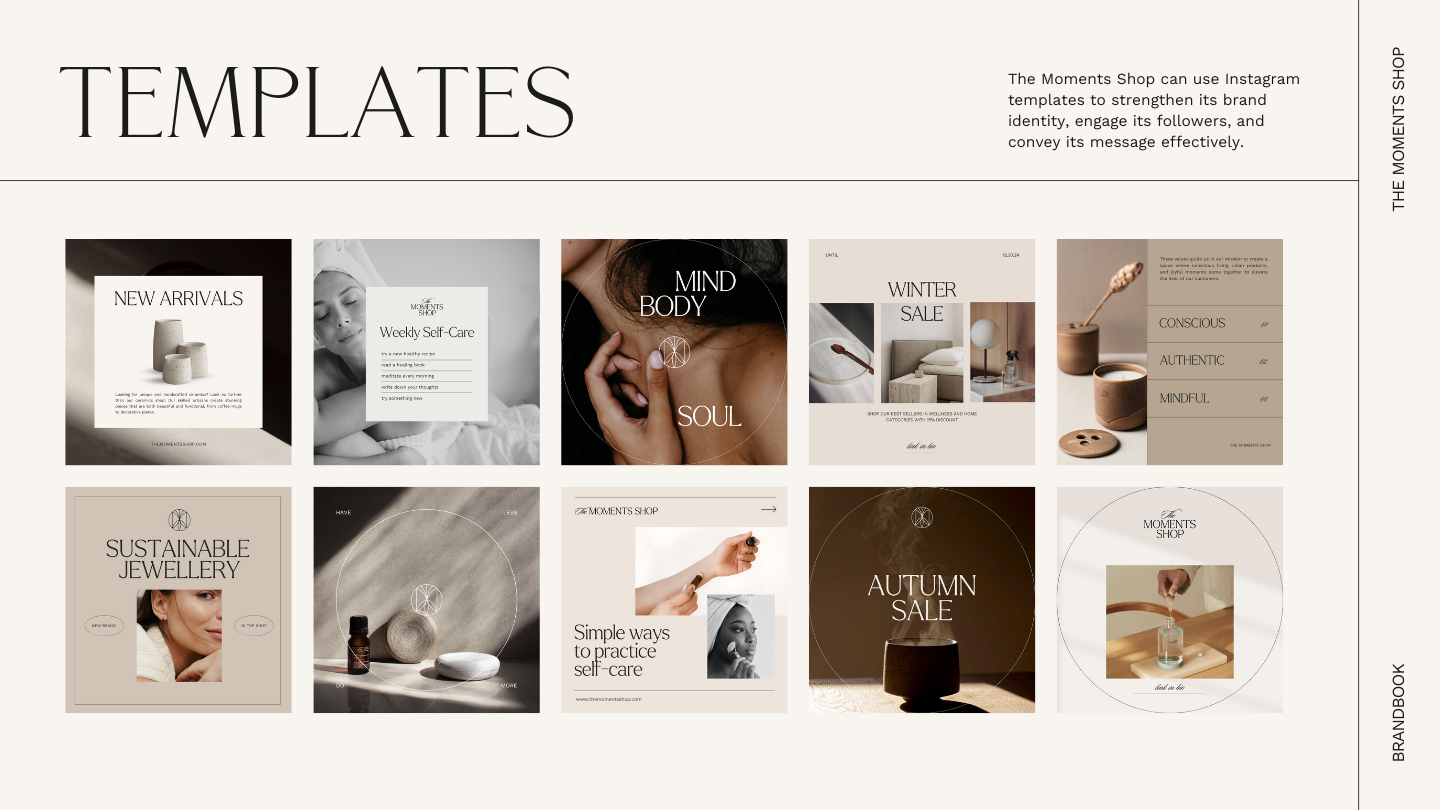10 Things That Must be Included in a Brand Book
Visual Branding (or Visual Identity) is a set of unique visuals that make a brand recognizable, distinguish it from others, show brand values, and personality and express main ideas. These can be logo, banners, web design, social media presence, and much more.
These visual elements help form the first impression and create a holistic image in the eyes of the target audience. The main purpose of the visual brand design is to create a cohesive and recognizable brand presence,
Brand identity is a strategic tool, that goes beyond aesthetics. Read below to see examples that demonstrate how successful businesses leverage visual elements to create a lasting and positive impact on their target audience, ultimately contributing to the overall success of the brand.
Here are the key components of visual branding:
01
LOGOTYPE
The logo is a central visual element and often the most recognizable symbol of a brand. It typically includes a unique combination of symbols, icons, and/or text that represents the brand's identity.
02
COLOR PALLETTE
Colors play a crucial role in conveying the mood, personality, and values of a brand. A well-defined color palette ensures consistency across various brand materials and helps in building a strong visual identity.
03
TYPOGRAPHY
The choice of fonts and typography contributes to the overall look and feel of a brand. Consistent use of specific fonts helps in maintaining a cohesive visual identity across different platforms and materials.
04
IMAGERY STYLE
The type of images and photography style associated with a brand is an important visual element. Whether it's the use of specific types of photography (e.g., lifestyle, product-focused) or certain visual motifs, these choices contribute to the overall brand image.
05
LAYOUT GUIDELINES
Additional graphic elements, such as patterns, icons, or illustrations, can be used to enhance the visual identity. These elements should be consistent with the brand's personality and style.
06
SOCIAL MEDIA
Consistent design principles, such as layout structure, grid systems, and design elements, contribute to a cohesive and professional appearance across various brand materials.
07
PACAKGING DESIGN
For businesses that sell physical products, packaging design is a critical visual element. It not only serves a functional purpose but also contributes to the overall brand experience and perception.
08
WEBSITE DESIGN
The design of your website is a significant part of visual branding. A well-designed website reflects the brand's identity and provides a seamless and visually pleasing user experience.
09
STATIONARY DESIGN
Visual consistency across social media platforms is essential for maintaining a unified brand image. This includes profile pictures, cover images and the visual style of shared content.
10
ENVIROMENTAL DESIGN
For physical locations, signage and environmental graphics contribute to the brand's visual presence. Consistent use of visual elements in physical spaces helps create a unified brand experience.
Successful visual branding involves careful consideration and strategic planning of these elements to ensure a cohesive and memorable brand identity. Consistency across all these visual components is key to building brand recognition and establishing a strong connection with the target audience.
Thank you so much for reading this blog post! I hope you had a moment of inspiration.
Subscribe to my YouTube channel to watch my new videos. And don't forget to follow me on Instagram @arina.voy for more inspiring content.
See you next time,
Arina








